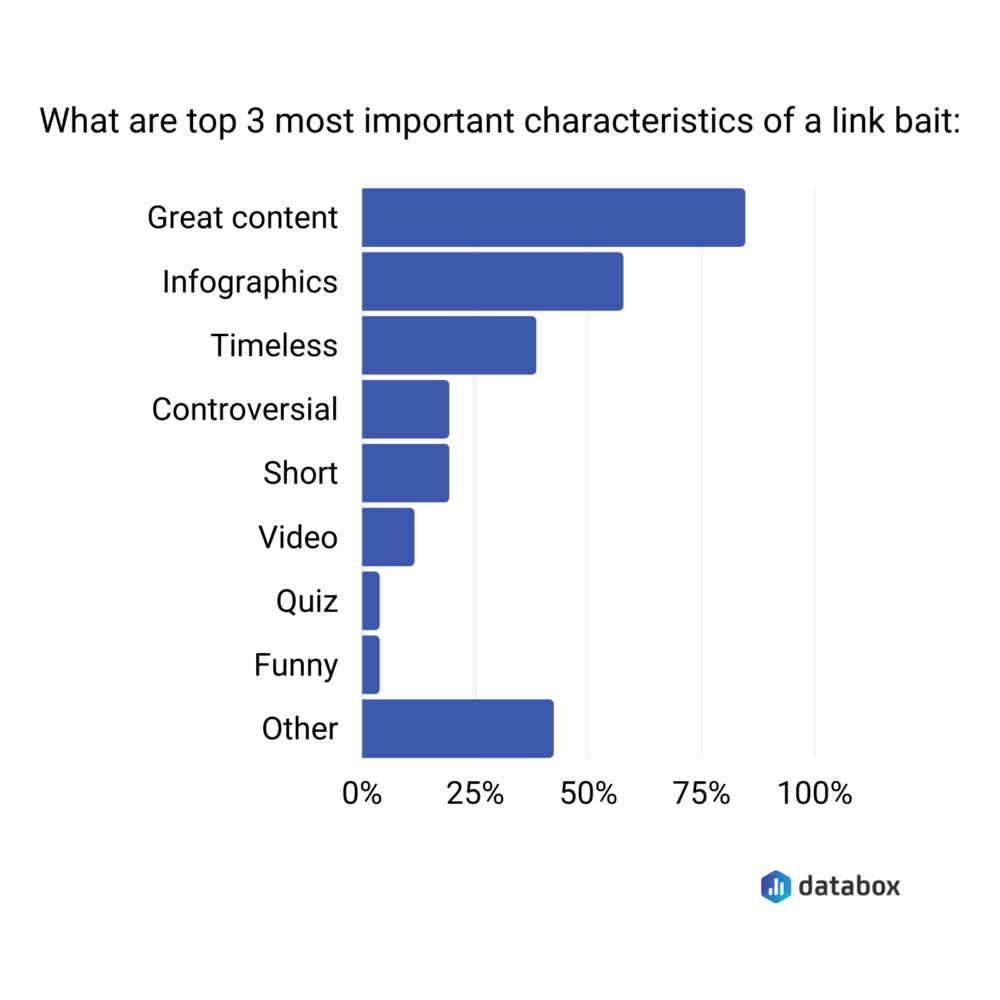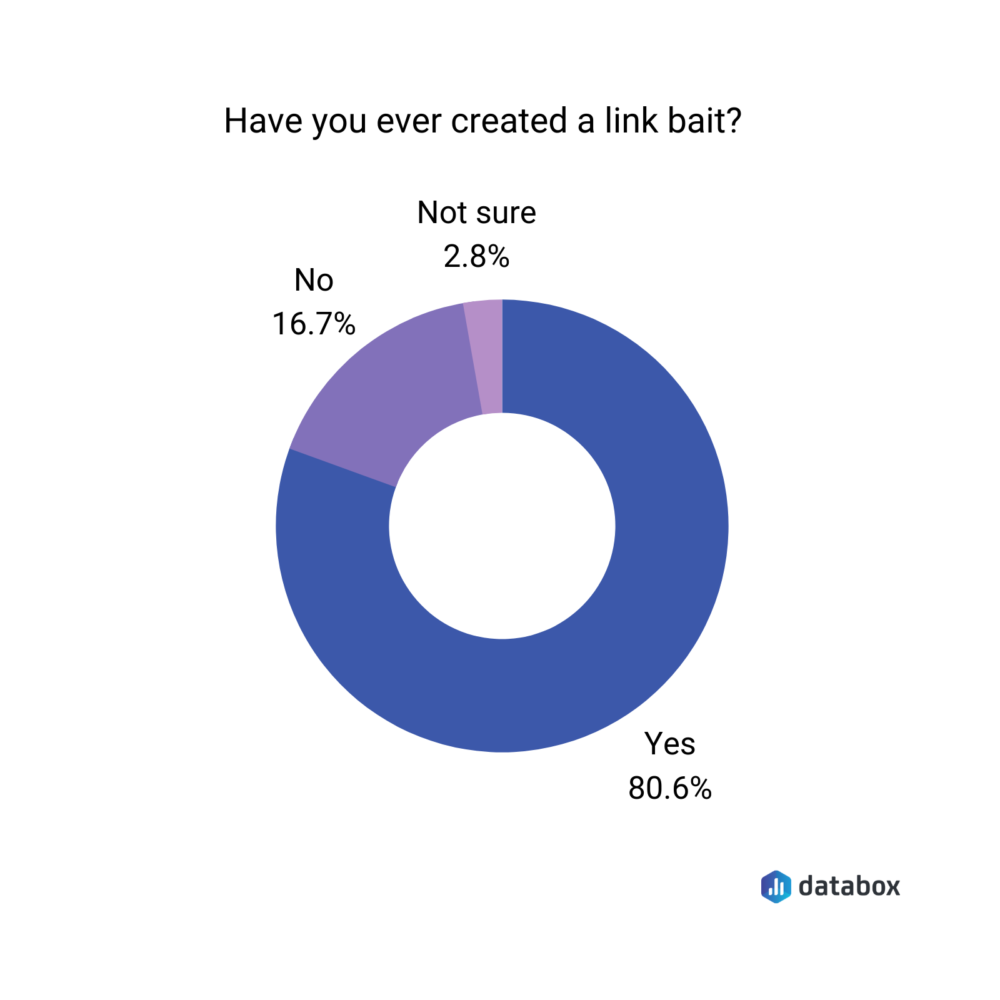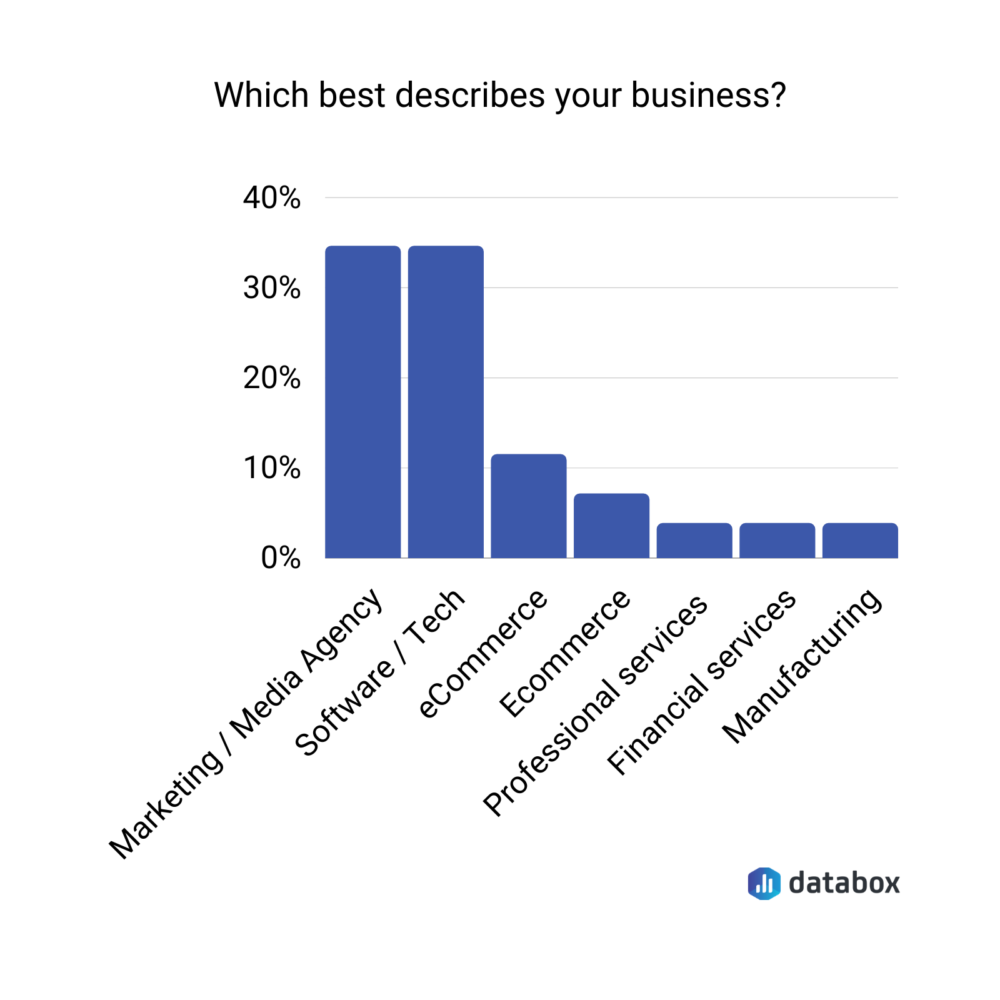Table of contents
Link bait is what it sounds: a bait that attract links.
It works two ways: gets you links (and, with it, better SEO) and offers enough value for others to link to your content. So, it’s a typical win-win.
But how do you create such link-worthy content? In this post, we’ll lift the veil from the top three characteristics of linkbait content and share some examples so you can get the answer to how to do link baiting in SEO.
All in all, here’s what you’ll learn today:
- What is Link Bait?
- Why is Link Bait an Effective Link Building Tactic?
- 6 Link Bait Strategies With Examples You Can Learn From

Let’s get on with it.
What is Link Bait?
Link bait is content that’s created specifically with the goal of getting inbound links. In other words, it’s content that is made to earn backlinks from other sites.
But why bother getting all those links? Because links pass essential SEO juice to your site – boosting its authority and making it easy for you to rank.
Related: 30 Free Link Building Tips for Building Links On Little-to-No Budget
Why is Link Bait an Effective Link Building Tactic?
An overwhelming majority of the content on the internet has zero backlinks. Even if it’s high-quality stuff, it doesn’t earn as many backlinks as it should.
The drawback? You can’t improve your site’s domain authority and, with it, credibility for better ranking. Luckily, link bait solves this concern as it’s specifically engineered to be linked, therefore, helping you up your SEO game.
Thanks to its link-attracting nature, it’s an effective link building tactic. But what makes it so effective in the first place? Our survey respondents claim great content, infographics, and timelessness are important characteristics of a link bait that make it so effective at building links.

In fact, the vast majority of respondents claim to have created link bait (81%) themselves.

These respondents mostly work at agencies, tech/digital companies, or eCommerce (full respondent profile below). So, we can assume that they are experienced digital authors.

Related: 100+ Marketers Share The Link-Building Techniques That Work Best
6 Link Bait Strategies With Examples You Can Learn From
As promised, below you’ll find an expert-sourced list of link bait examples for your inspiration.
We’ll kick off with the example of a link bait that has the most backlinks – 3,650+ backlinks to be specific. Then, we’ll look at the second most backlinked link bait at 453 links; followed by a full-on dive into other noteworthy examples.
Let’s go:
1. Curate statistics page
2. Share first-person accounts of what’s worked for you
3. Create original research reports
4. Creatively copy those who are ranking
5. Curate a lot of information on one topic in one post
6. Gather and organize data
PRO TIP: How to Analyze Your Best Pages for SEO Performance
To optimize your website for organic search, you probably use Google Search Console to learn which pages receive the most impressions and clicks, and which queries are driving them. Now you can quickly assess your SEO performance in a single dashboard that monitors fundamental metrics, including:
- Which search queries drive traffic to my website?
- Which of my website pages generate the most impressions and clicks in search engines?
- What’s the average click-through rate (CTR) for our website pages in search?
- What’s the average position our website pages show up in search results?
- How many clicks have our website pages generated in search results this month?
and more…
Now you can benefit from the experience of our Google Search Console experts, who have put together a great Databox template showing the most important KPIs for monitoring organic search performance. It’s simple to implement and start using as a standalone dashboard or in marketing reports!
You can easily set it up in just a few clicks – no coding required.
To set up this Google Search Console Dashboard, follow these 3 simple steps:
Step 1: Get the template
Step 2: Connect your Google Search Console account with Databox.
Step 3: Watch your dashboard populate in seconds.
1. Curate statistics page
Pieces rounding-up statistics on a niche topic are always great for attracting links as is this example on Mobile eCommerce stats page from OuterBox.
Their team’s Justin Smith notes, “One of the best ways our team has approached creating link-worthy content is to create informational articles centered around statistics.”
“People love hard-hitting stats and are constantly searching for metric-driven data online,” Smith observes. Question now is: why does this type of content work so well as a link bait?
Smith explains, “As a fellow content creator, think of how often you want to include a stat or some kind of compelling fact in your blog post. If you develop a page that aggregates some of the most compelling stats on a particular topic, chances are people are not only going to find your page online, they are going to cite it as a source and link back to it. This easy-to-execute strategy has proven to be a major game-changer for us when it comes to creating link-worthy content.”
However, for creating a successful stat-rich content piece, you need to target an evergreen topic. 111+ digital marketing statistics from the G2 team that has 453 backlinks is an excellent case in point.
To get around to creating such a link bait, take a page from Scott Julio’s book: “You need to identify those trending topics early and determine how you can add value for others when they are creating that similar content. Evergreen content around a specific topic is a great link bait article that stays relevant over the course of a year.”
What’s more, the team at Kinsta has found success with the same link bait content such as with this piece on WordPress statistics.
“The reason these do so well is that they cover subjects that are frequently covered in the industry, so they will often show up when others are searching for interesting stats to enrich their own content,” Sam Gooch elaborates.
“This usually leads to the statistic being quoted, along with a link. This is a tried and tested approach that has helped us get links from some extremely high authority domains.”
2. Share first-person accounts of what’s worked for you
Such expert insights-backed pieces are another good source of links. Why? Because they give people original strategies to consume and link in their work.
The team at Unstack follows this approach. Ceillie Clark-Keane from the team outlines, “We share our own strategies, complete with what worked, what didn’t, and the data.”
In Clark-Keane’s opinion this works for the simple reason that people want to learn from marketers who’ve been in the trenches. “When I’m looking into whether to I should spend more time LinkedIn posts or how to improve my email subject lines, I want to hear from marketers who have tried these strategies and learn what worked for them.”
“When I’m looking for examples to use in a blog post, I want those same stories to reference,” Clark-Keane continues. “Knowing this, I make sure that we’re sharing first-person accounts in our content. For example, one of our top blog posts by links is a step-by-step guide to the SEO strategy that helped us grow our organic traffic 500%.”
Put simply, if you want more links, get ready to share what’s worked for you and how others can replicate the process.
3. Create original research reports
This is another popular way to gain links. But, you must be ready to put in the work – same as the team at CareerPlug does.
“In December of 2020, we published a 2021 Hiring Trends Report, and it quickly became a featured snippet for the search term ‘2021 hiring trends’. The data was very useful for recruiters and hiring managers who were ramping up their hiring in January,” writes Lauren Torregrossa.
To create such a link bait, find out a pain point in your industry that people want to learn about. Then, start surveying your audience to gather the raw material for the report. Once done, analyze the findings and package the results in a visually attractive format that everyone finds uber-valuable.
4. Creatively copy those who are ranking
“We aim to see if other brands already ranking for keyword X are using some kind of link bait to help them rank,” highlights Nikola Roza from Nikola Roza- SEO for the Poor and Determined.
“We see exactly what they’re doing and then we copy their approach, but make it even better. Why? Because, if we see that link bait works for a certain site and for certain keywords, it means it’ll work for us too provided that we do something similar, and we get our work in front of the people.”
Roza goes on, “But if link bait is already ranking, then they’re getting new links all the time, simply because they rank, and then these new links help them rank some more.”
So, the solution, you ask? “Kicking them out of that cycle of passive link building is to be creative with your link acquisition,” Roza says. “And also to go full force at it. Because if they get a link per week, and so do you, you will never catch up to them.”
There’s another similar approach you can take here. It’s a hat tip to SEO Hacker’s Sean Si. “We look for keywords related to our websites where the top-ranking pages are outdated and then we create better and fresher content.”
Si also notes: “Of course, the work does not stop there. Because people cannot link to the content if they don’t see it. So, we work first by getting links from outreach.”
Editor’s note: To effectively track and optimize your link acquisition efforts, it’s important to use marketing reporting software. With the right software, you can monitor your progress, analyze data, and adjust your strategy accordingly.
5. Curate a lot of information on one topic in one post
Some would call this the skyscraper technique to creating content that gets links. But it’s simply: “gathering a lot of information” as Frederik Drost from Katoni ApS puts it.
Drost says the technique is “a great link bait strategy, especially if it concerns many areas.”
And shares how they did it: “We did this in Denmark with Black Friday fun facts, because everyone loves to talk about the Black Friday number a few days after, so we made a fun infographic. For this page, we needed to do outreach though.”
At the same time, Drost shares, “One of our best-performing pages is a big page about winter bathing and the benefits of this activity, with a cool infographic.”
This page, in particular, is helpful for improving not just “health and happiness, but also beauty aspects like the skin and hair,” Drost observes. “So, a lot of sites can find it useful to link to, and we rank well on it, meaning we have gathered 16 links from it, 12 naturally without outreach.”
The takeaway? Gather info on a specific topic then share it a visually appealing format such as an infographic. And, to make sure, you get the most bang for your buck, conduct outreach for getting links on the content.
6. Gather and organize data
Finally, whether it’s stats or research/data on a topic, curating all of it in one post can get you lots of links.
FansRaise’s TJ Kelly echoes the same: “If you want links and shares, write for your audience’s audience. Make it your audience look good by sharing your content. Most of the time, that means stats, stats, and more stats.”
“In most cases, the data to answer important questions is easy to find. It’s just tedious to compile it all into one easy-to-use format,” Kelly adds. “If you’re willing to do the leg work of compiling and organizing the data, your audience will thank you by sharing it far and wide.”
From conducting original research to creating stats-enriched posts and packaging information in visually appealing infographics, there are a lot of ways to create successful link baits.
So, how are you planning to create your next link bait?















